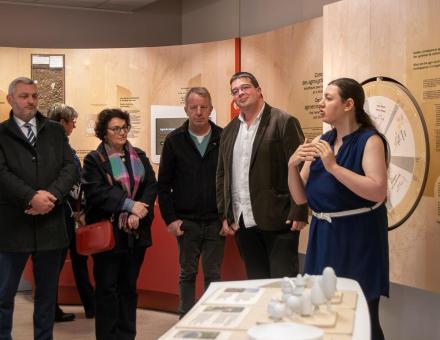Next time you visit Disneyland Paris, take a close look at the rocks around you. They tell a story, not a fairy tale, but the story of the Earth. An adventure just as fantastic... and very real.
Behind the glitz and glamour of a theme park lies a fascinating reconstruction of planet Earth, Disney style. How accurate is it?
Let's take a look at an unexpected aspect of Disneyland: its geological dimension. Not the underground where the park is built, but the landscapes it depicts. The Imagineers (the park's attraction and set designers) often drew inspiration from real natural formations to create the enchanting and sometimes disturbing scenery that visitors admire every day.
Mountains east of Paris
Take Big Thunder Mountain, arguably the park's most iconic mountain, in the area inspired by the American Wild West.

Its red rocks, colored by iron oxides, and steep cliffs are directly inspired by iconic natural sites in the American West, such as Monument Valley Tribal Park, Arches National Park, and Goblin Valley State Park, between Arizona and Utah.
These iconic sites are made up of sandstone that is 160 to 180 million years old, known as Navajo and Entrada sandstones. These highly porous sandstones have been used for several decades by geologists as “reservoir rock analogues,” i.e., as the surface equivalent of deep reservoirs to understand fluid flows.
In addition to their visually spectacular appearance, it is in the Navajo Sandstones that geologists have been able to develop current models of fault growth. The presence of these tectonic faults and fractures is particularly well represented in the scenery of Big Thunder Mountain. In particular, the designers respected the relationship between the thickness of the geological layers and the spacing of the fractures, which corresponds to a precise and respected mathematical model.
This reproduction is no accident. As early as the 1950s, Walt Disney himself wanted to incorporate natural landscapes into his parks for their evocative power.
These mountains have become iconic and can be found in Disney films such as Indiana Jones and the Last Crusade (1989), at the beginning of which the young Indy fights his first battle to rescue relics from tomb raiders in Arches National Park. For the Imagineers, the aim was to recreate a dream version of the Wild West, but using easily identifiable geological landmarks as a way of anchoring the fiction in a tangible world.
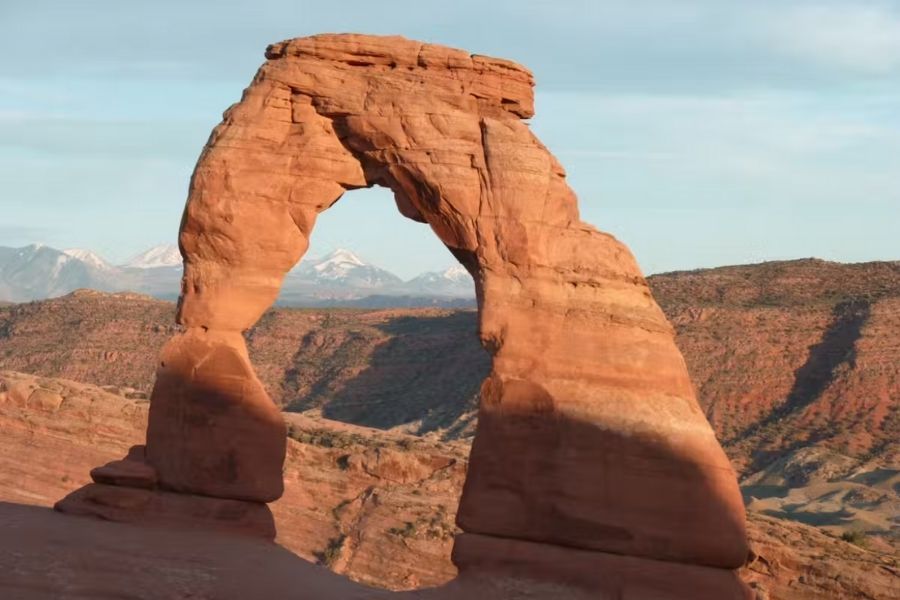
The Dragon's Cave: underground geology and imagination
Another striking example is the Dragon's Lair, nestled beneath Sleeping Beauty's castle. This attraction, unique to Disneyland Paris, features a 27-meter-long animatronic dragon lurking in a dark, damp cave.
The setting is reminiscent of endokarsts, networks of limestone caves found in southern France (such as the Aven Armand in Lozère), Slovenia, and China.
Stalactites, dripping water, and rough walls are all elements that evoke real processes: the dissolution of limestone by acidic water, the formation of concretions, sedimentation, and more.
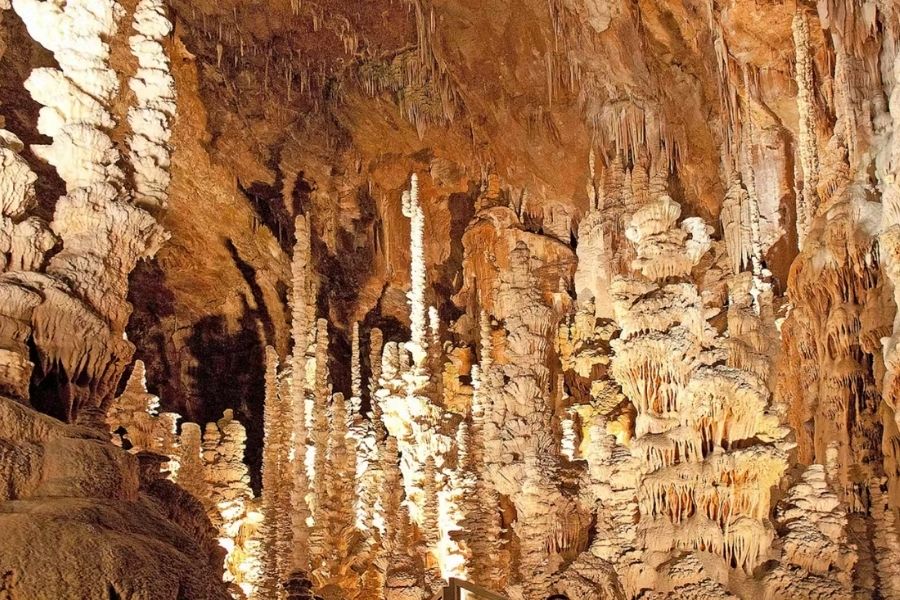
The only exception to this underground reconstruction is the sudden transition from limestone to granite, on which the castle in the park stands. These rocks have very different origins: limestone is sedimentary, while granite is magmatic, formed deep underground by the cooling of magma. They rarely occur side by side, except in certain tectonic contexts, such as along major faults or in areas of contact metamorphism, where the granite heats up and transforms the surrounding sediments. An example of this can be found in the Massif Central, between the granites of Limousin and the limestone of Quercy. Although possible, this configuration is rare and involves complex structures that are difficult to represent in a park. It therefore simplifies to the extreme a geological history spanning hundreds of millions of years.
But, of course, nothing here is natural. Everything is reconstructed in concrete, fiberglass, or resin. The effect is nevertheless striking. Visitors are immersed in a credible underground world, because it is based on a fantastical but largely realistic geology.
The jungle hides frozen volcanic flows
In the part of the park called Adventure Isle, visitors pass through a lush jungle filled with underground tunnels, suspension bridges, and waterfalls. But behind this exotic vegetation lie geological formations typical of tropical or volcanic regions: rounded boulders, granite chaos, rocky peaks, and even basalt columns.
In particular, vertical columnar formations can be seen on the rocky peak called Spyglass Hill, near Robinson's cabin and the suspension bridge. These resemble basalt columns, such as those found on the Giant's Causeway in Northern Ireland or at Usson (Puy-de-Dôme) in Auvergne.
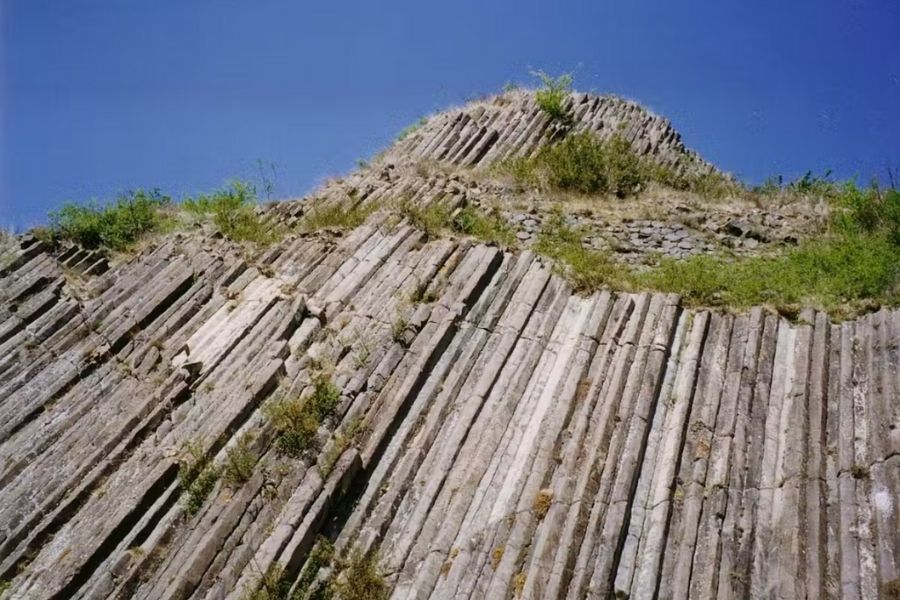
These geometric structures are the result of the slow cooling of basalt lava flows, which contract to form hexagonal prisms. Although the Disney versions are artificial, they are clearly inspired by these natural phenomena and add a volcanic touch to the tropical setting.
The setting for the Indiana Jones attraction, the Temple of Peril, is reminiscent of the Angkor site in Cambodia, which is built on sandstone and laterite (weathered rock formations that form in hot, humid climates). The moss-covered stones, faults, and roots that infiltrate them simulate an interaction between rock and living organisms. This type of landscape evokes very real processes: chemical weathering, erosion in humid tropical environments, and rock fracturing.
By combining volcanic geology and tropical landscapes in this way, this part of the park becomes a synthesis of varied geological environments. However, recreating such a varied natural environment in a limited space imposes certain constraints. Each type of rock presented here corresponds to a specific geodynamic environment, and it is difficult for all of them to coexist in nature.
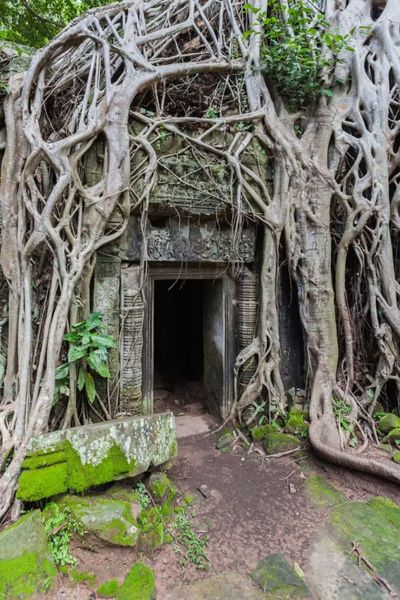
When Snow White was already digging for gems: minerals at Disneyland
Long before the mountains of the Far West or the dragon caves, the first mention of geology in the Disney universe dates back to Snow White in 1937. Remember: the seven dwarfs work in a gem mine where diamonds, rubies, and other sparkling precious stones are piled high. This scene, reinterpreted in the park's shops and attractions, has helped to forge an enchanted but enduring vision of minerals in the collective imagination.
At Disneyland Paris, this symbolism can be found in shop windows, under Sleeping Beauty's castle, and in certain attractions such as Snow White and the Seven Dwarfs and Aladdin's cave, where colorful crystals sparkle in the mine galleries.
These minerals, although fanciful, are often inspired by real specimens such as diamonds, quartz, amethysts, and topazes. In reality, these crystals are the result of slow geological processes linked to pressure, temperature, and the chemical composition of the subsoil, and these minerals are not found in the same geographical areas at the same time.
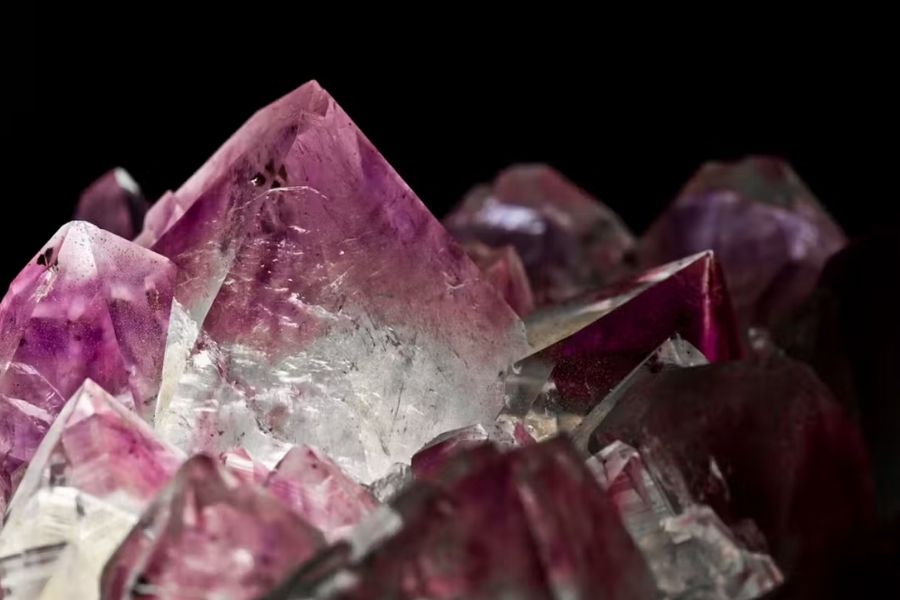
A hidden but omnipresent science
At first glance, Disneyland Paris seems light years away from Earth sciences. And yet, every rock formation and artificial landscape is based on precise geological knowledge: rock types, erosion patterns, colors, textures, and more.
This approach is similar to that used in cinema, particularly in Disney-Pixar films such as Cars (2006), where the sets are validated by geologists and geographers.
Why not take advantage of a visit to the park to raise visitors' awareness of these aspects? As is already the case for the park's remarkable trees, an educational description of places of geological interest could be provided. A kind of “geology of the imagination” that would connect science and pop culture. After all, if a child can recognize a stalactite in a cave at Disneyland, they may also be able to recognize it in nature.
About the authors
Élodie Pourret-Saillet, Associate Professor in Structural Geology, UniLaSalle
Olivier Pourret, Associate Professor in Geochemistry and Head of Scientific Integrity and Open Science, UniLaSalle





